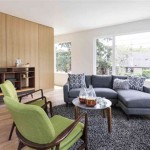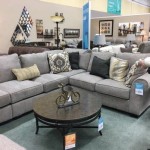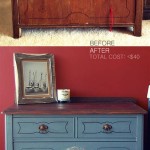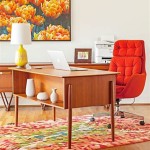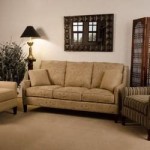What Color Walls Go With Green Furniture
Green furniture offers a grounding, natural aesthetic to any space. The versatility of green allows it to blend with various design styles, from modern minimalist to bohemian eclectic. However, selecting the right wall color is paramount to creating a harmonious and visually appealing room. The ideal wall color will complement the green hues of the furniture, enhancing their beauty and contributing to the desired atmosphere of the room.
The specific shade of green in the furniture is a crucial factor in determining the best wall color pairings. A vibrant emerald green sofa, for example, will require a different approach than a muted sage green armchair. Light green furniture will interact uniquely with wall colors compared to furniture in darker shades of green, such as forest or olive green. Understanding the nuances of each green shade provides the foundation for a successful color palette.
Consideration should also be given to the overall design style of the room. A traditional setting may benefit from classic pairings featuring neutral tones, while more modern spaces may embrace bolder contrasts. Factors such as the amount of natural light in the room, the size of the space, and the desired mood should all be taken into account when selecting the appropriate wall color.
Understanding Green Color Palettes
Green, as a color, occupies a wide spectrum ranging from cool, blue-toned greens to warm, yellow-toned greens. Its position on the color wheel influences how it interacts with other colors. Complementary colors, analogous colors, and contrasting colors can all be used to create different effects with green furniture.
Complementary colors are located directly opposite each other on the color wheel. For green, the complementary color is red. While a full-on red wall might be overwhelming, incorporating accents of red can create a visually stimulating and balanced space. Think red-toned artwork, throw pillows, or area rugs to complement green furniture. However, the intensity of both the green and the red should be carefully considered to avoid a clashing effect. Muted reds or variations like terracotta can be more subtle and pleasing pairings with certain greens.
Analogous colors are those that sit next to each other on the color wheel. For green, these would be blue and yellow. Using analogous colors creates a harmonious and calming effect. Blue walls with green furniture evoke a sense of tranquility and are particularly well-suited for bedrooms or living rooms. Yellow walls, especially soft, muted yellows, can create a warm and inviting atmosphere when paired with green furniture. The specific shades of blue and yellow to use would depend on the specific undertone of the green furniture; cooler greens might pair better with cooler blues, and warmer greens with warmer yellows.
Contrasting colors refer to colors that are significantly different from each other, but not necessarily opposites on the color wheel. For example, pairing green with warm shades like orange or pink can create an energetic and playful space. Light pink walls can provide a soft and feminine contrast to green furniture, while terracotta creates an earthier, more grounded feel. The key to using contrasting colors successfully is to balance the intensity and saturation of the colors. A bright green sofa paired with a vibrant orange wall might be overwhelming, but a muted olive green sofa with a soft apricot wall could be visually appealing.
Neutral Wall Colors for Green Furniture
Neutral wall colors are a safe and versatile option for any room. They provide a blank canvas that allows the green furniture to take center stage, while still contributing to the overall aesthetic of the space. Common neutral options include white, gray, beige, and greige (a blend of gray and beige).
White walls are a classic choice that works well with almost any shade of green. Bright white walls offer a clean and modern look, while off-white or creamy white walls can create a warmer and more inviting atmosphere. The specific shade of white should be chosen based on the undertones of the green furniture. Cool-toned greens often pair well with crisp, bright whites, while warm-toned greens may benefit from the subtle warmth of an off-white shade.
Gray walls offer a sophisticated and contemporary look. Light gray walls can create a calming and serene atmosphere, while darker gray walls can add drama and depth to the room. When pairing gray with green furniture, consider the undertones of the gray. Cool grays with blue undertones pair well with cool-toned greens, while warm grays with beige undertones complement warm-toned greens. A medium-gray wall can be a particularly versatile choice, providing a neutral backdrop that allows the green furniture to stand out without overpowering the space.
Beige walls are a warm and inviting option that can create a cozy and comfortable atmosphere. Beige walls pair particularly well with warm-toned greens, such as olive green or sage green. However, care should be taken to avoid a monotonous look. Introduce texture and visual interest through accessories, artwork, and other design elements. Variations of beige, like sand or cream, can also be considered to find the perfect complement to the green furniture.
Greige walls offer a balanced option that combines the benefits of both gray and beige. Greige walls are incredibly versatile and can work well with a wide range of green shades. They provide a neutral backdrop that is neither too cool nor too warm, allowing the green furniture to take center stage. The specific shade of greige should be chosen based on the desired mood and the overall design style of the room.
Bold Wall Colors for Green Furniture
For those seeking a more dramatic and impactful look, bold wall colors can be a great option. However, it’s important to approach bold color choices with caution and careful planning. The goal is to create a harmonious balance between the wall color and the green furniture, avoiding a visually chaotic or overwhelming space.
Navy blue walls can create a sophisticated and elegant contrast with green furniture. This pairing works particularly well with lighter shades of green, such as mint green or seafoam green. The deep blue provides a grounding anchor that allows the lighter green to pop. Navy blue also complements darker greens like emerald, creating a deep and luxurious effect. Gold or brass accents can enhance the richness of the combination.
Mustard yellow walls can create a warm and inviting atmosphere when paired with green furniture. This combination works particularly well with darker shades of green, such as olive green or forest green. The mustard yellow provides a cheerful and energetic contrast to the more subdued green. This pairing is particularly well-suited for bohemian or eclectic design styles. The intensity of the mustard should be carefully considered; a softer, more muted mustard might be preferable to avoid overwhelming the space.
Terracotta walls offer a grounded and earthy feel that complements green furniture beautifully. This combination is particularly well-suited for spaces with a natural or organic aesthetic. Terracotta pairs well with both warm and cool greens, creating a sense of harmony and balance. Think of the natural combinations found in nature - green foliage against the red-brown earth. Introduce natural textures like wood and woven materials to enhance the earthy feel.
Even unconventional colors like purple or orange can be paired with green furniture, but require careful consideration. A light lavender wall can provide a soft and whimsical contrast to green furniture, while a muted orange can create an energetic and playful space. The key to success with unconventional color pairings is to balance the intensity and saturation of the colors. A soft, muted version of the bold color is often a safer and more visually appealing choice than a bright, saturated hue. Consider using color swatches and testing the colors in the space before committing to a full-scale paint job.
Ultimately, the best wall color to pair with green furniture depends on personal preference, the specific shade of green, and the overall design style of the room. A well-chosen wall color can enhance the beauty of the green furniture and create a visually harmonious and inviting space. By understanding the principles of color harmony and considering the various factors involved, creating a stunning and personalized interior is achievable.

Green Living Room 31 Inspiring Ideas

What Colours Go With A Green Sofa Barker And Stonehouse

Best Wall Paint Colors For Living Room With Green Sofa Youtube

The Girl With Green Sofablog Homedecorating

Vignette Design Decorating With Green

15 Green Living Room Ideas To Reinvigorate Your Space Furniture Choice

The 15 Best Green Sofas And Couches

Green Living Room Ideas Decorating With Luxdeco

5 New Green Wall Paint Color Trends

25 Welcoming Green Living Room Decor Ideas Shelterness


